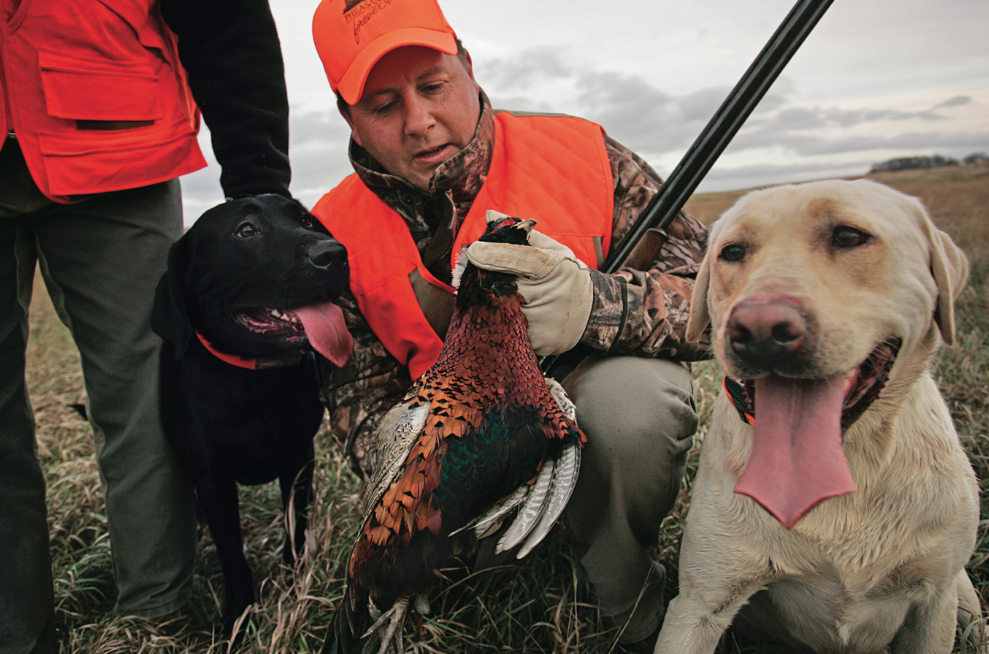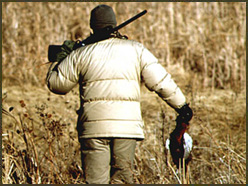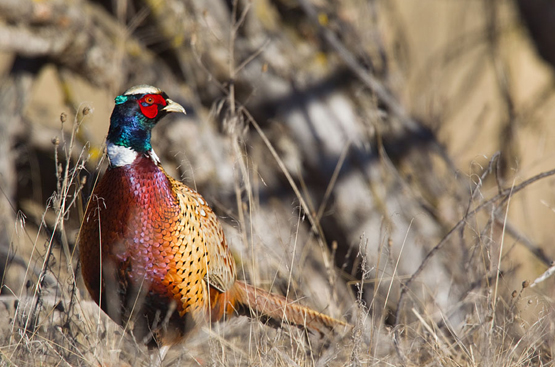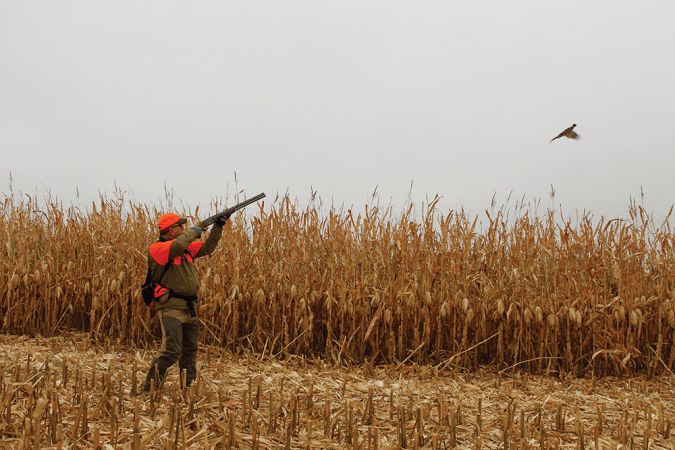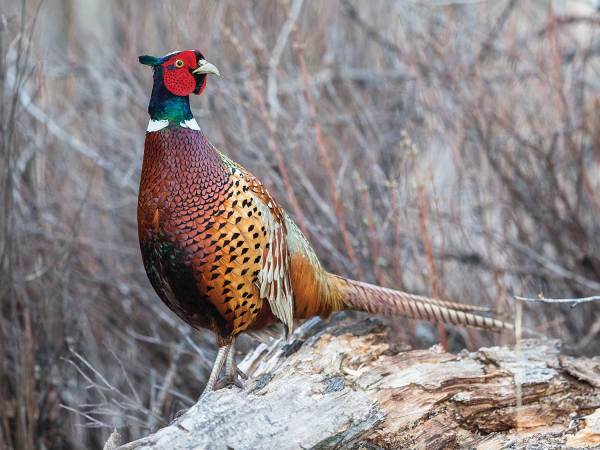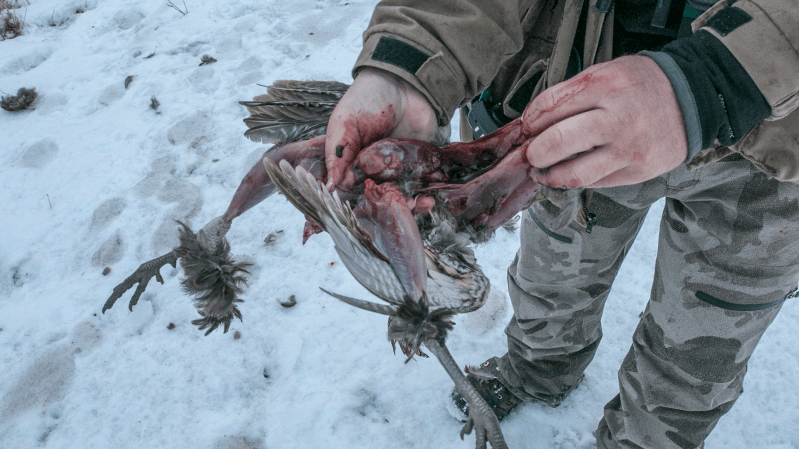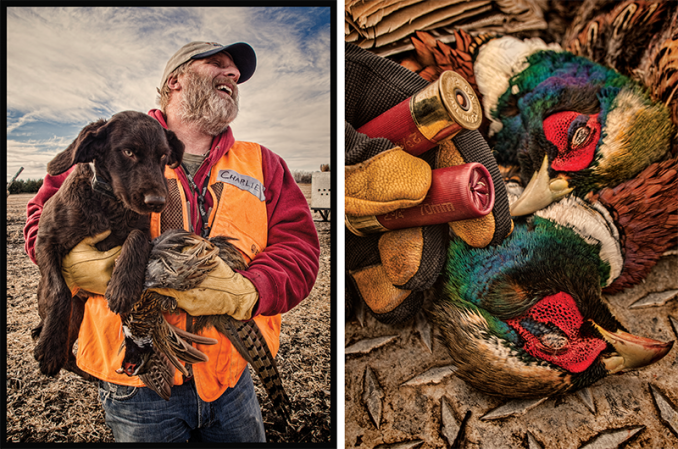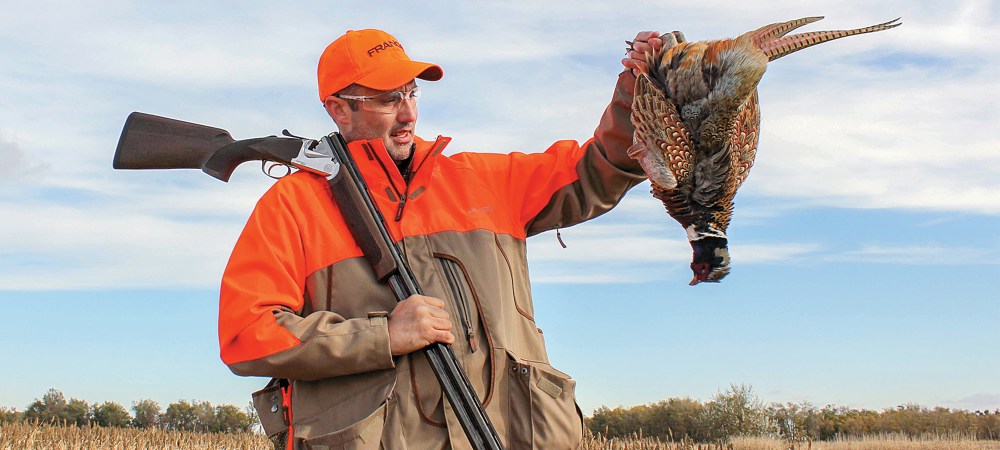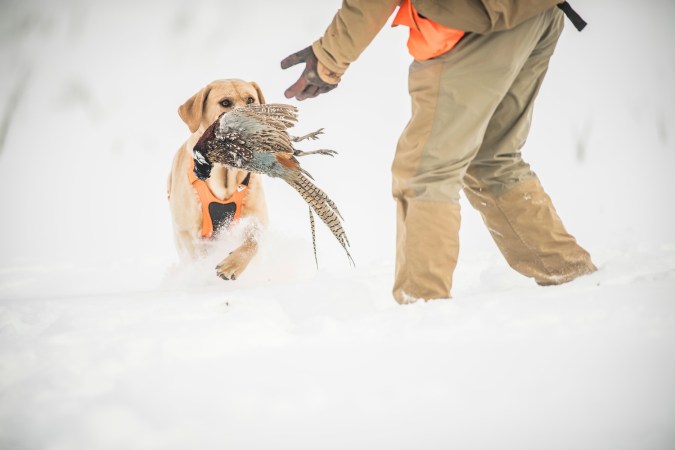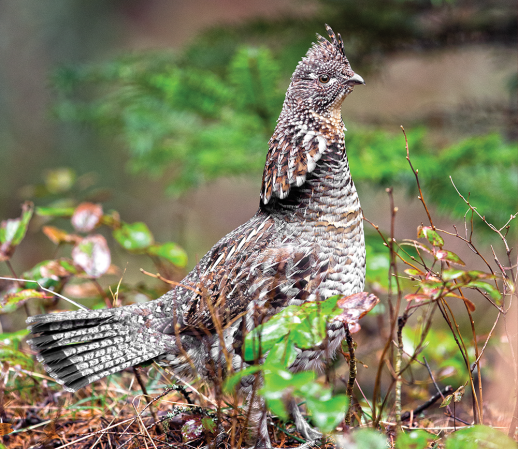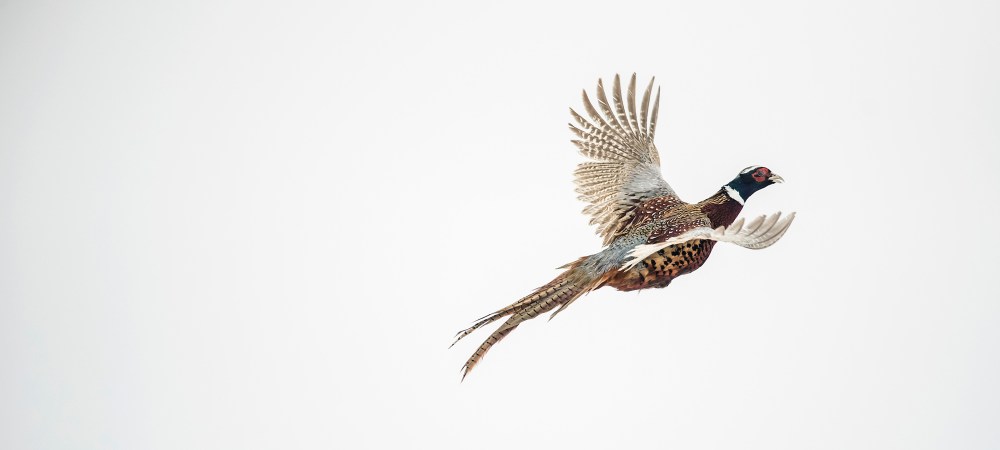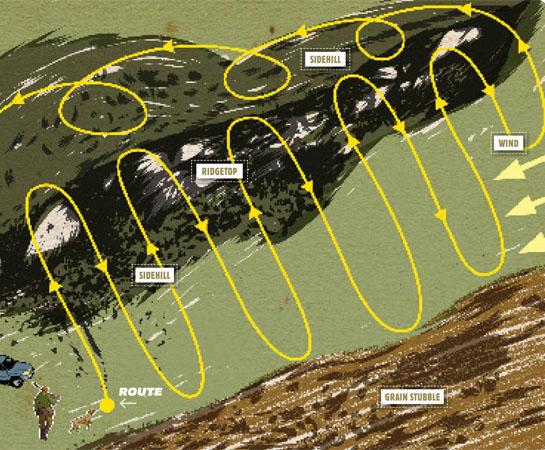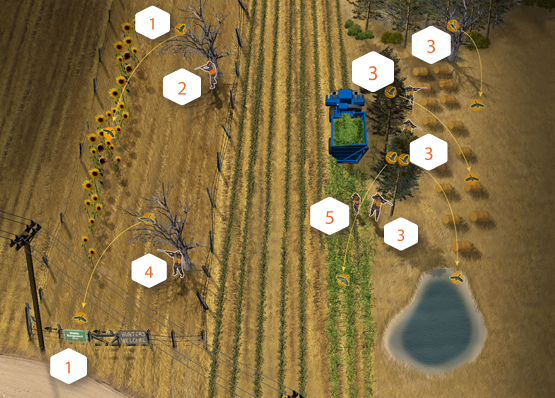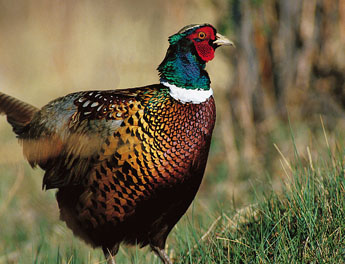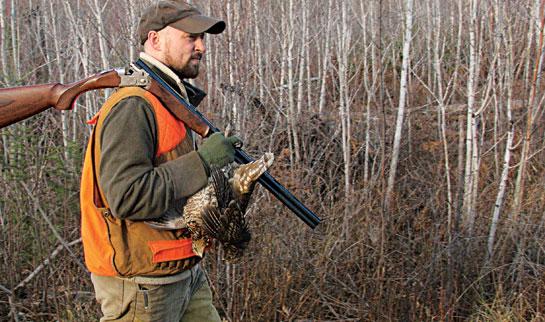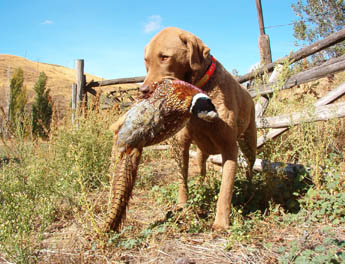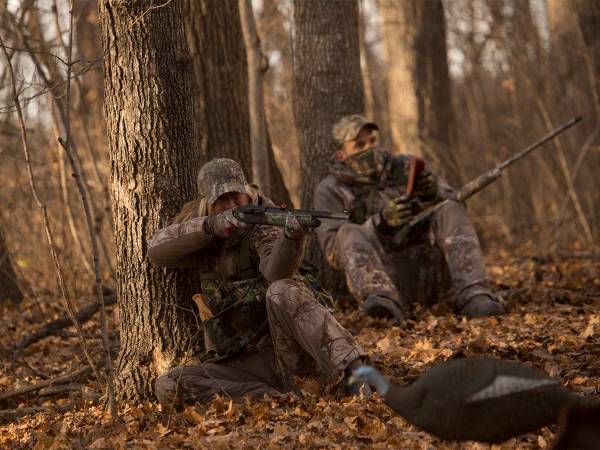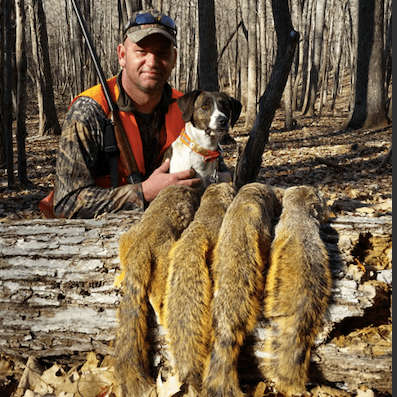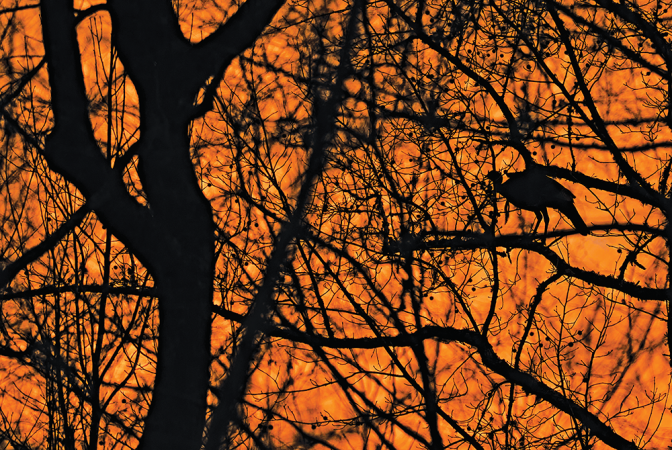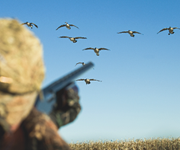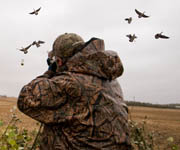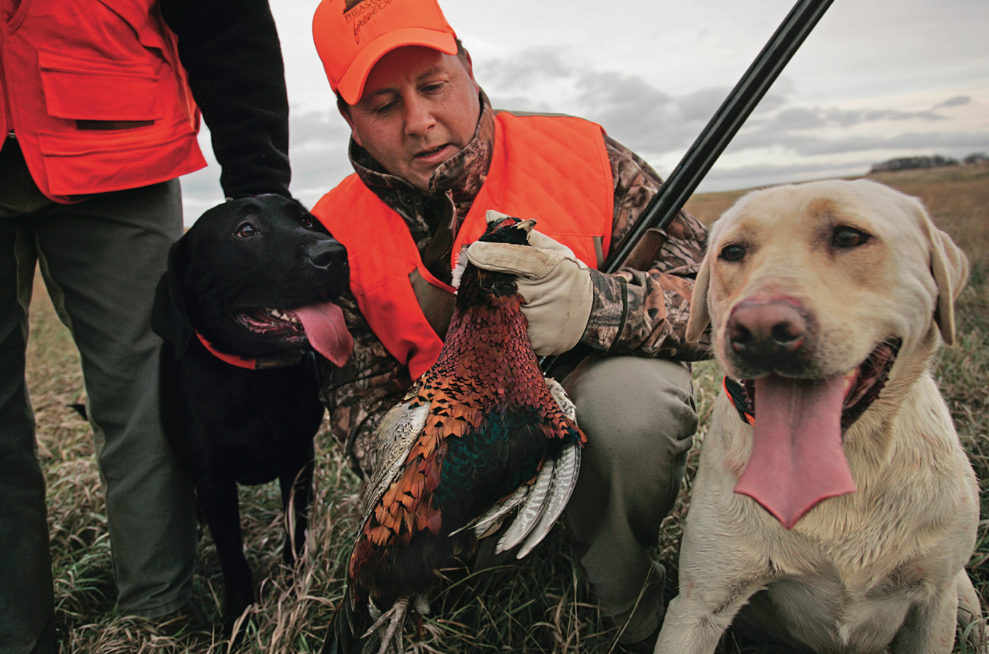
About the time most pheasant hunters quit for the day is when the hunting gets good. Give me just one hour a day to hunt and I’ll choose the last turn of the clock before shooting hours end.
Midmorning and early-afternoon pheasant hunting is challenging. After an early-morning feeding session, ringnecks scurry to the meanest, roughest cover they can find to bide their time and survive the day. This means dense cattails, thorny thickets, or secluded weed patches—the kinds of places that are miserable to hunt. These are also the kinds of places where birds easily slink or sprint away from hunting pressure. Pheasants go on survival alert and use their legs more than their wings, employing tricky evasions such as running with the wind or sneaking around behind you.
But by late afternoon, pheasants need to feed again. They move out of hiding cover, laying down scent as they walk toward grain stubble (corn, soybeans, wheat), plowed ground, hay meadows, or lightly grazed pastures to forage. This opens up hunting opportunities.
Then, as the day wanes, birds head toward the grassy cover preferred for nighttime roosting. Once again, the birds lay down scent for dogs to follow. Or they fly in from feeding areas, revealing their new whereabouts to you. Either way, ringnecks at their roosting areas are reluctant to move. They sit tight for hunters and dogs.
Where to Hunt
Pheasants prefer light grass for roosting, often in uplands away from the wetness and muck the birds will tolerate during the day. A grassy field near a cattail slough is perfect. Look for at least two cover types butting up to one another, but preferably three. Transition zones concentrate birds, minimizing their need to travel and reducing their exposure to danger.
One of my most reliable happy-hour pheasant hotspots features the border of a quarter-section of CRP grass adjacent to a crop stubble field (usually corn but sometimes soybeans), adjoined by an overgrown ditch choked with cattails and willows.
Another favorite spot combines a cattail slough, an abandoned pasture, and a nearby thornapple thicket. Crop stubble is close, too. The birds will run circles around you all day in the cattails, but by afternoon they’re moving into the grass and tucking in for the evening.
How to Hunt
Consider these six tips for success on happy-hour pheasants:
1. A slow, patient, quiet, and cautious approach is key. Pause often to give your dog a chance to find birds. If you hunt without a canine, these stops will make the pheasants nervous and they’ll flush; go too fast and they’ll let you walk right past.
2. Watch for birds gliding to the grass from surrounding crop fields. Mark the ringneck down and get over to hunt the spot. Pheasants won’t move far now.
3. If you shoot a pump or autoloader, use an Improved Cylinder choke tube for the close-in shots that result from evening’s tight-sitting birds. If you shoot a double barrel with tubes, make one IC and the other Modified.
4. Try to hunt with the sun at your back for your best swings through cover. A low sun in your face could make you hold shots at birds you can’t positively identify as roosters.
5. In most places, shooting hours end at sunset. Know sunset’s timing to the minute. Hunt hard right up to that moment, then unload and head back.
6. Evening hunting can be the only way to shoot birds when the crops are up. Toward dusk, ringnecks have to work their way into the grass to roost. Happy hour gives you a chance to finally get at them.
